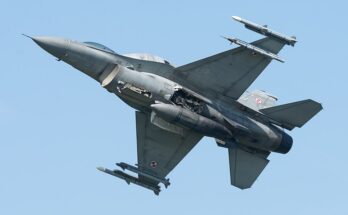With the security environment along Europe’s eastern borders with Russia worsening, the Estonian government is planning to invest more in the country’s defense capability by adding an additional EUR380 million ($431 million) to topline budgets over the coming years.
The bulk of the funding – EUR340 million (90 percent) – is earmarked for the reinforcement of the Estonian Defense Forces’ direct defense capabilities, while the remainder will go towards non-military developments that help strengthen overall national defense. The latter includes secure communications solutions for the Foreign Service to ensure resiliency and open lines with allies and foreign embassies during a crisis.
Due to current security situation in Europe, 🇪🇪 allocates additional EUR 380 million in the next years to increase our independent defence capability & strengthen defence readiness. The additional funds will complement our defence budget that for 2021 is 2,3% of GDP. pic.twitter.com/j4IwcmDqQY
— Kaja Kallas (@kajakallas) January 20, 2022
Estonia is in the midst of a 10-year National Defense Development Plan. Under this plan, military allocations are to remain at or above 2 percent of national GDP, with any funding for direct infrastructure and/or maintenance costs related to hosting allied NATO forces to be additional to the 2 percent earmark (meaning not factored into the minimum 2-percent-of-GDP annual defense allocation).
The country is directing force modernization spending toward improving the readiness of the ground forces through the replacement of small arms, acquisition of night-vision equipment, and replenishment and modernization of man-portable anti-tank weaponry, as well as acquiring armored vehicles and artillery. There is also a requirement for the development of sea surveillance capabilities and an air operations command center.
The defense budget for 2022 is the largest in Estonia’s independent history since 1991, representing a 16 percent year-on-year nominal increase over 2021 and amounting to 2.3 percent of national GDP.
Because of its small size and proximity to Russia, Estonia’s core national security concern involves potential Russian incursions into its territory by air, sea, and land, as well as other non-direct means of destabilizing the Estonian republic. These include cyberattacks (as occurred in 2007 following the government’s decision to move a 6-ft statue of a Soviet Red Army soldier from the center of the capital city of Tallinn) or intentionally sowing civil discord among the significant ethnic Russian population (25 percent) as a pretext for invasion or separatist conflict.
Estonia and neighboring Latvia recognize the potential for Moscow to use the “plight” of its people abroad (often referred to as “compatriots”) as a pretense to undertake a variety of offensive measures against countries outside its borders. The takeover of the Crimean Peninsula from Ukraine in 2014 represented just one such as instance, as Moscow justified the annexation of the area as being necessary to protect the rights of Russian-speaking peoples outside the borders of the Russian Federation.
Because of its small size and location bordering Russia, Estonia has forged a consistent approach since 2012 of meeting and maintaining the NATO minimum level requirement of annual defense spending equal to at least 2 percent of GDP.
Dan Darling is Forecast International’s director of military and defense markets. In this role, Dan oversees a team of analysts tasked with covering everything from budgeting to weapons systems to defense electronics and military aerospace. Additionally, for over 17 years Dan has, at various times, authored the International Military Markets reports for Europe, Eurasia, the Middle East and the Asia-Pacific region.
Dan's work has been cited in Defense News, Real Clear Defense, Asian Military Review, Al Jazeera, and Financial Express, among others, and he has also contributed commentary to The Diplomat, The National Interest and World Politics Review. He has been quoted in Arabian Business, the Financial Times, Flight International, The New York Times, Bloomberg and National Defense Magazine.
In addition, Dan has made guest appearances on the online radio show Midrats and on The Media Line, as well as The Red Line Podcast, plus media appearances on France 24 and World Is One News (WION).




